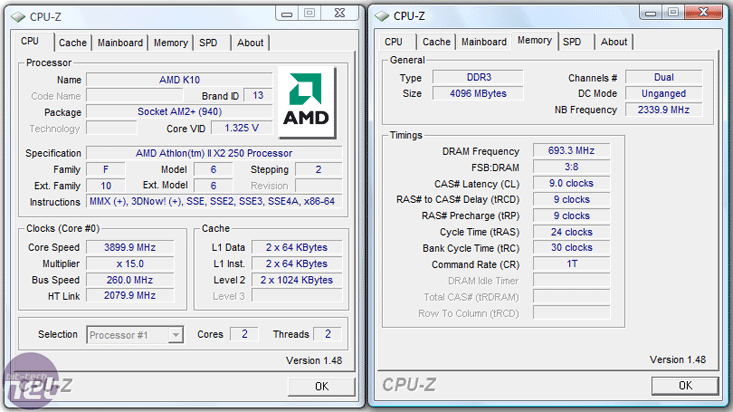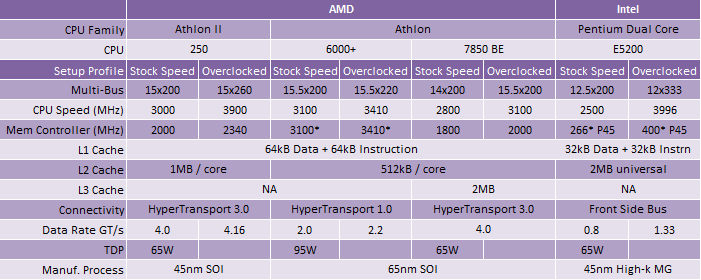Overclocking
Cranking the HyperTransport (HT) bus means balancing this increase against memory controller frequency, memory frequency, overall HT frequency and also of course compensating it all with increased voltages. The advantage of Black Editions is that by simply increasing the CPU multiplier, the rest of the system stays within specification.To overclock the Athlon II X2 250, we increased the HyperTransport base clock from 200MHz to 260MHz, while simultaneously dropping back the HT multiplier so the overall frequency was around 2GHz - more than enough for a single CPU system. In addition, the DDR3 memory was overclocked to 1,386MHz and the integrated memory controller frequency was increased to 2.34GHz. This overclock boosted the CPU frequency from 3GHz to 3.9GHz and required a vcore of 1.35V to stabilise. Any more voltage didn't seem to help, and anything over 3.9GHz caused Windows to bluescreen then restart.
A CPU running at close to 4GHz for just over £60 is certainly nothing to sniff at - it's a higher frequency than any Socket AM3 CPU we've seen to date, and it's certainly better than the dual-core 65nm Athlons, which struggled to overclock much beyond 3GHz.

Test Setup

Supplemental Hardware
- Graphics Cards: Zotac GeForce GTX 280
Motherboards: Biostar 790GX A2+ (AMD 790GX/SB750), MSI 790FX-GD70 (AMD 790FX/SB750), Biostar TPower i45 (Intel P45/ICH10R)
Hard Drive: Seagate Barracuda 7200.9 160GB SATA II
Power Supply: PC Power and Cooling Silencer 750W
Memory: Corsair Dominator XMS2-8500 5-5-5-15, Corsair XMS3-12800 9-9-9-24
Operating System: Windows Vista Home Premium x64 SP1

MSI MPG Velox 100R Chassis Review
October 14 2021 | 15:04









Want to comment? Please log in.